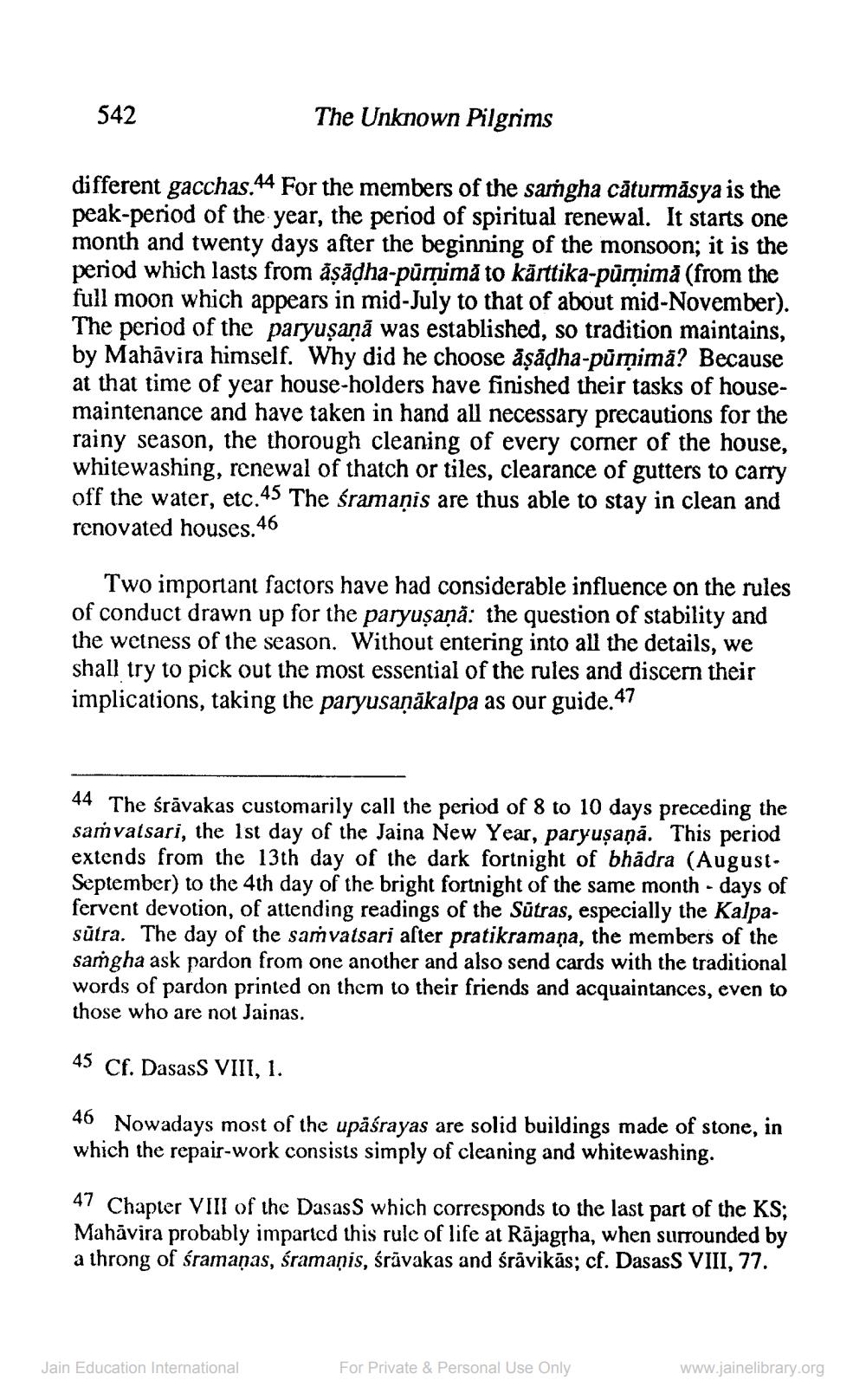________________
542
The Unknown Pilgrims
different gacchas.44 For the members of the samgha căturmāsya is the peak-period of the year, the period of spiritual renewal. It starts one month and twenty days after the beginning of the monsoon; it is the period which lasts from aşādha-pūmima to kärttika-purnimă (from the full moon which appears in mid-July to that of about mid-November). The period of the paryuşaņā was established, so tradition maintains, by Mahāvira himself. Why did he choose aşadha-purņimā? Because at that time of year house-holders have finished their tasks of housemaintenance and have taken in hand all necessary precautions for the rainy season, the thorough cleaning of every corner of the house, whitewashing, renewal of thatch or tiles, clearance of gutters to carry off the water, etc.45 The śramaņis are thus able to stay in clean and renovated houses. 46
Two important factors have had considerable influence on the rules of conduct drawn up for the paryuşaņā: the question of stability and the wetness of the season. Without entering into all the details, we shall try to pick out the most essential of the rules and discern their implications, taking the paryusaņākalpa as our guide.47
44 The śrāvakas customarily call the period of 8 to 10 days preceding the samvatsari, the 1st day of the Jaina New Year, paryuşaņā. This period extends from the 13th day of the dark fortnight of bhādra (August. September) to the 4th day of the bright fortnight of the same month - days of fervent devotion, of attending readings of the Sūtras, especially the Kalpasutra. The day of the samvatsari after pratikramana, the members of the samgha ask pardon from one another and also send cards with the traditional words of pardon printed on them to their friends and acquaintances, even to those who are not Jainas.
45 Cf. DasasS VIII, 1.
46 Nowadays most of the upăśrayas are solid buildings made of stone, in which the repair-work consists simply of cleaning and whitewashing.
47 Chapter VIII of the Dasass which corresponds to the last part of the KS; Mahāvira probably imparted this rule of life at Rājagļha, when surrounded by a throng of śramanas, śramanis, śrávakas and śråvikās; cf. DasasS VIII, 77.
Jain Education International
For Private & Personal Use Only
www.jainelibrary.org




